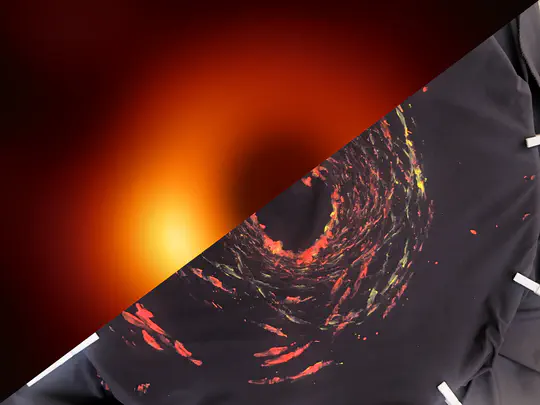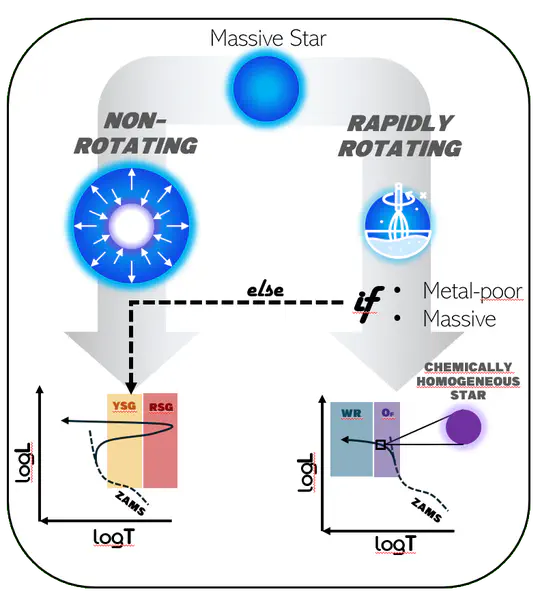Hello
internet traveller.
I’m Marco Dall’Amico, a postdoctoral researcher at the University of Padova and at the Heidelberg University. In my research, I study the origin of gravitational wave sources and I explore the impact of stellar dynamics and binary interactions through numerical simulations.
Download CVInterests
- Stellar & black hole dynamics
- Single & binary stellar evolution
- Star cluster evolution
Education
PhD in Astrophysics, 2024
University of Padova
MSc in Physics, 2020
University of Padova / Stockholm University
BSc in Astronomy, 2017
University of Padova
My Research
*
Binary black holes stand as one of the principal sources of gravitational waves in the Universe. Emitting ripples in the fabric of spacetime, black holes gradually spiral closer, eventually culminating in a merger. Binary black hole mergers stand out as the most energetic events in the Universe, observable from Earth with laser detectors known as interferometers. The ideal environment for the formation of binary black hole mergers is within star clusters – crowded neighborhoods of stars held together by gravity, where dynamical interactions between celestial bodies occur. In my research, I explore the mechanisms through which these interactions between stars and black holes lead to the formation of binary black hole mergers, with a particular focus on binary-single encounters.
Massive stars are often found in binary systems. Binary life can be tough: mass transfer episodes, tidal interactions, and common envelope events strongly affect the evolution of a massive star. From time to time, some of these processes can spin up massive stars to rotational velocities that exceed hundreds of kilometers per second. Under these conditions, a star can become a massive rotator, and its stellar interior can become fully mixed. Ashes of nuclear fusion are brought toward the stellar surface while fresh hydrogen fuel is mixed from the outer envelope into the stellar interior, preventing the formation of a strong chemical gradient. These stars are called chemically homogeneous, and their evolutionary pathway strongly differs from that of normal stars, with significant implications for black hole formation. In my work, I study the effects of binarity both from the stellar population and the compact binary merger perspectives, and I investigate the impact of chemically homogeneous evolution on massive stars.
Not only black holes can merge. Before being black holes, these objects were once massive stars. Stars are forged inside chaotic and crowded environments called young star clusters. There, they can interact with each other and, sometimes, they merge to produce even more massive stars. In my research, I study the history of these stars from their birth up to their death. I simulate their dynamical and stellar evolution and I study how the surrounding environment impacts their life and afterlife when they become massive black holes.
Me in a nutshell Download my complete CV here
Postdoctoral Researcher
University of Padova - Heidelberg University
Current research:
- Chemically homogeneous evolution
- Stellar mergers in star clusters
- Pop III stars binarity
Ph.D. in Astronomy
University of Padova
- Awarded with accademic laude
- Winner of the Cariparo Prize PhD Fellowship funded by Fondazione Cariparo
- Thesis: “The impact of chaotic dynamics and binary evolution on the formation of compact binary systems”
- Supervisor: Prof. Michela Mapelli, Co-Supervisors: Prof. Giuliano Iorio, Dr. Sara Rastello
- 11 conferences as speaker
- 2 supervised bachelor and 1 master students
MSc in Physics
University of Padova
- Final mark 110/110 cum laude
- Grade point average 29.8/30
- Erasmus+ at Stockholm University from 08/2018 to 06/2019
BSc in Astronomy
University of Padova
Recent Publications
(2024).
Eccentric black hole mergers via three-body interactions in young, globular, and nuclear star clusters.
Astronomy & Astrophysics, Volume 683, id.A186, 14 pp..
Talks & Outreach
Sagittarius A*
A Youtube live I've done with Dr. Sara Rastello for astrospace.it about the first picture of Sag. A* (Italian).
European Researcher Night
A talk about my work during the European Research Night in September 2021, Padova (Italian).
Let’s light up a black hole!
An outreach activity I designed for the course Designing innovative public engagement activities presented at the astronomy outreach festival in Castellaro Lagusello back in 2022. The main idea of this laboratory is to show children how matter accreted by a black hole emits light, and how astronomers manage to ‘see’ the black hole precisely thanks to its accretion disk. If you want to reproduce this experiment, you can find more info at this link.

Contact
Catch you on the flip side!
- marco.fromfriend@gmail.com
- Vicolo dell'Osservatorio 3, Padova, Veneto 35122
- Skype Me
- Zoom Me



